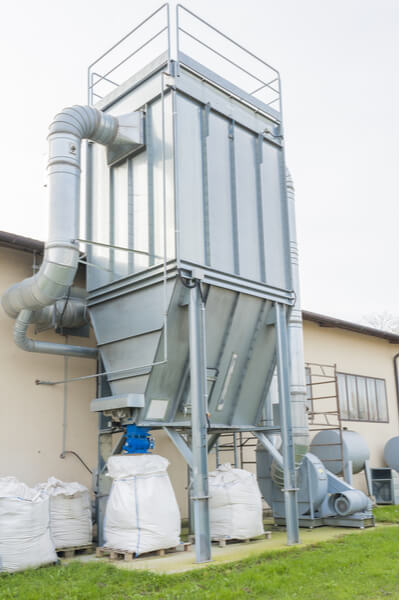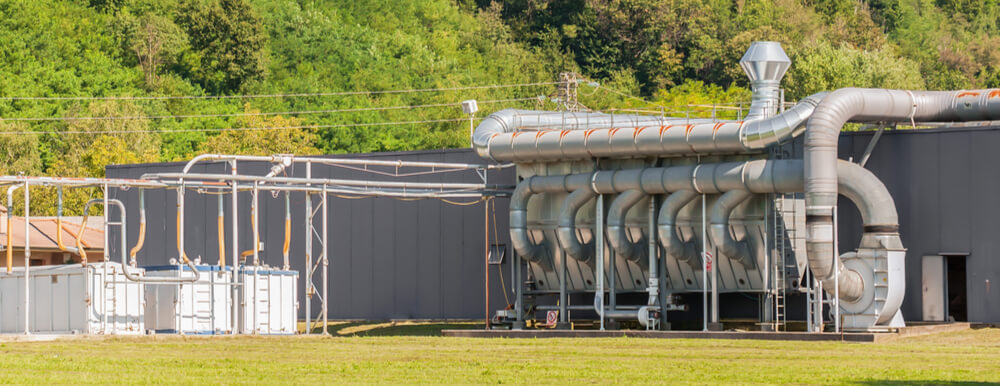
Preventative Maintenance for Air Filtration Systems: A Quick Guide
Industrial air filtration systems are foundational to uninterrupted performance in oil and gas, petrochemical, and manufacturing applications. These systems condition compressed air to meet ISO 8573-1 standards for air purity by removing solid particulates, water vapor, oil aerosols, and oil vapor. Inadequate maintenance results in suboptimal performance, leading to moisture-induced corrosion, fouled instrumentation, inaccurate readings, and process disruptions.
Below is a technical guide to designing and implementing a strategy for preventative maintenance for industrial air filtration systems.
Guide Overview
- Component Functions and System Design
- Failure Modes and Maintenance Consequences
- Inspection and Service Intervals
- Operational Indicators of System Degradation
- Instrumentation and Monitoring Tools
- When to Use External Maintenance Resources
How Air Filtration Systems Work
Air filtration systems consist of multiple stages:
- Particulate filters (pre-filters): Typically rated for 3-5 microns; remove rust, scale, and bulk particulate matter. Often installed upstream of air dryers.
- Coalescing filters (high-efficiency oil/water separators): Rated down to 0.01 microns; remove oil aerosols and fine particulates using a borosilicate microfiber media.
- Activated carbon filters: Remove oil vapor and hydrocarbon gases. Installed downstream of coalescing filters.
- Dryers: Lower the dew point of compressed air. Types of air dryers include:
- Refrigerated dryers (dew point: ~35–50°F): Suitable for general-purpose air.
- Desiccant dryers (dew point: -40 to -100°F): Required for instrumentation, critical controls, and sub-zero conditions. Available as heatless, externally heated, or blower purge types.
- Membrane dryers: Use selective permeation to remove moisture. Compact but limited in flow and dew point capability.
- Moisture separators and auto-drains: Installed at low points to evacuate condensate from the system.
System design also incorporates pressure regulators, dew point monitors, particulate sensors, differential pressure gauges, and zero-loss drain valves.
The Cost of Neglect
Operational risks from poor maintenance include:
- Corrosion: Moisture in air lines oxidizes piping, tools, and instrumentation. Corrosion byproducts plug orifices and affect valve actuation.
- Control system failure: Water vapor and oil reduce sensor reliability. High humidity can interfere with pneumatics and cause erratic PID loop performance.
- High differential pressure: Clogged filters increase ∆P, forcing compressors to work harder, raising energy consumption.
- Bacterial growth and fouling: In systems exposed to organic matter, standing water creates microbial contamination.
- Inaccurate dew point or pressure readings: Affects the performance of moisture-sensitive equipment like mass spectrometers, chromatographs, and flow meters.
Maintenance neglect also accelerates compressor wear, especially if downstream filters fail to catch condensate or oil carryover. These risks highlight the importance of implementing preventative maintenance for air filtration systems.
Building a Preventive Maintenance Plan
A time-based and condition-based maintenance strategy is recommended. Example:
Daily:
- Visually inspect differential pressure gauges on filters.
- Check condensate drain functionality (zero-loss preferred).
- Monitor air dryer dew point readings.
Weekly:
- Manually drain receiver tanks (if not automated).
- Inspect coalescing filter bowls for oil saturation.
Monthly:
- Inspect auto-drains for blockage.
- Calibrate dew point monitors and pressure transducers.
- Verify refrigerant pressures on refrigerated dryers.
Quarterly:
- Replace particulate filters (based on pressure drop or service hours).
- Test desiccant saturation and dryer regeneration cycle timing.
- Perform leak detection survey using ultrasonic tools.
Annually:
- Replace desiccant media (if saturated or based on hours).
- Inspect and clean dryer heat exchangers and valves.
- Test insulation resistance on dryer heating elements (externally heated units).
Include OEM guidelines, actual operating conditions, and air quality audits in plan development. Preventative maintenance for air filtration systems should be documented and reviewed regularly to align with system performance trends and evolving process demands.
Read now: When to Upgrade Your Industrial Air Filtration System

When Your Filtration System Needs Attention
These operational flags require immediate investigation:
- Pressure drop >10 psi across filters: Indicates media blockage or saturated coalescing layer.
- Dew point above -40°F (for instrument air): Sign of desiccant exhaustion or purge valve failure.
- Visible condensate downstream of dryer: Suggests failed separator, valve, or coalescing element.
- Noisy or overheating compressor: Typically caused by increased backpressure from clogged filters.
- Surge in compressor run-time hours: Potential air leaks, pressure imbalance, or failed regulation.
Failure to address these issues promptly can result in damage to downstream valves, analyzers, or production assets.
Tools and Technologies That Support Maintenance
Technologies that improve accuracy and reduce labor:
- Differential pressure sensors: Provide continuous ∆P data across filters and dryers.
- Dew point transmitters: Measure actual outlet moisture content (critical for ISO 8573 compliance).
- Zero-loss condensate drains: Use float and diaphragm mechanisms to discharge condensate without bleeding compressed air.
- Programmable logic controllers (PLCs): Automate dryer regeneration, alarm handling, and data logging.
- Wireless condition monitoring: Enables remote diagnostics of flow, pressure, and saturation.
- Ultrasonic leak detectors: Help quantify leaks that contribute to energy losses.
Calling in Experts for Consistent Operation
Experienced field service technicians can:
- Perform inline dew point testing and air quality audits
- Validate filter integrity with particle count measurements
- Conduct dryer performance benchmarking (heat duty, purge losses, cycle timing)
- Replace desiccant beds and reprogram dryer PLCs
- Retrofit legacy systems with modern sensors and auto-drain assemblies
If you’re operating rental units or critical systems in harsh environments, service contracts or integrated O&M support often provide better long-term outcomes than internal oversight alone.
Let NiGen Keep Your Systems Running
To speak with a technician or request a site evaluation, call or request a quote online. Maintain air quality, meet specifications, and reduce downtime with NiGen’s field-proven systems and service. Preventative maintenance for industrial air filtration and ventilation systems is an investment in uptime, efficiency, and operational integrity.
NiGen also provides nitrogen generation systems, air compressor packages, pipeline services, and process equipment field services.
